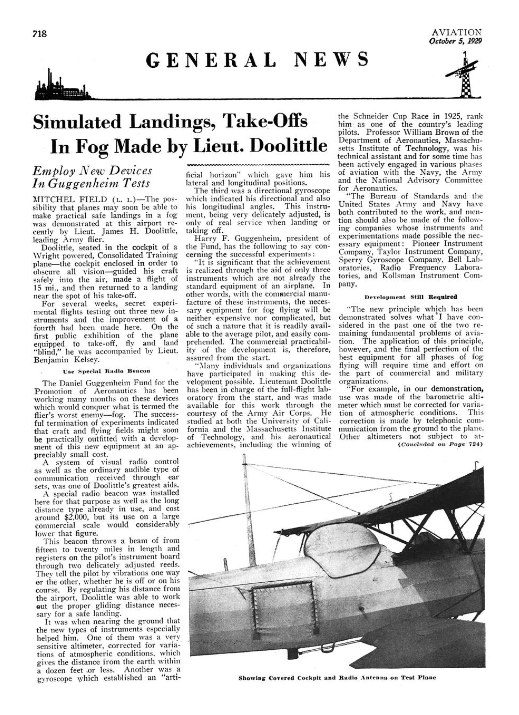From The Archives: Simulated Landings, Takeoffs In Fog By Lieut. Doolittle

Thirteen years before he led a daring B-25 raid over Japan, Lt. (later Gen.) James Doolittle made his first mark on aviation history. On Sep. 24, 1929, Doolittle proved an aircraft could fly and land safely even if the pilot could not see the ground or horizon.
As chronicled in Aviation Week (the Aviation), Doolittle stepped into the backseat of a Consolidated NY-2 trainer at Mitchell Field on Long Island, New York.
In the front seat was the safety pilot, Lt. Ben Kelsey, (who nine years later would crash the XP-38 Prototype near this same airport).
The backseat was covered so Doolittle could not see outside. in side his cockpit were marvels of cockpit instrumentation at the time: a newly invented artificial horizon display and two reeds connected to a radio antenna that transmitted the NY-2's position relative to the runway.
If Doolittle strayed too far to the left, the antenna vibrated the left reed faster than the right and vice versa.
Based on these instruments, Doolittle took off on a 15-mi. course that included several sharp turns and then landed safely.
Then principle of instrument flying had at last been proven, and aviation was never the same.
Editor's note: This brief was updated to correct the type of aircraft used in the raid over Japan.
Enjoy unlimited access to the complete Aviation Week Archive which has over 100 Years of Aviation Week — at your fingertips.
Every issue, every page, every article we have ever published. Your subscription includes full access to the archives, plus current Aviation Week & Space Technology articles (both digital and print packages available).




